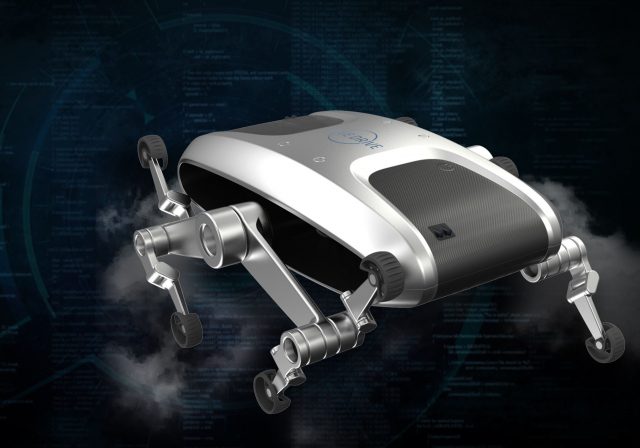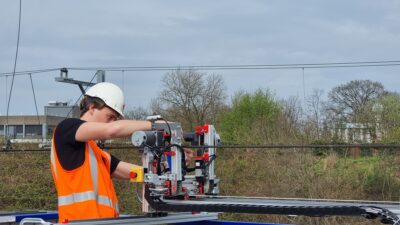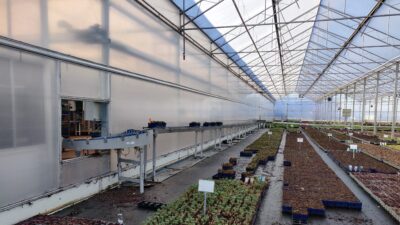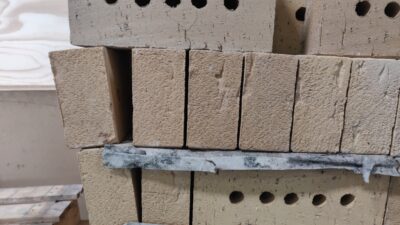In just over two weeks, during the Hannover Messe 2017, a product will be presented that can change the world of robotics ‘dramatically’: in the industry, in healthcare and at home. It is called LiveDrive from Genesis Robotics, a direct-drive actuator that can replace motor-gearbox actuators by eliminating the need for gears. The new device will make robots faster, safer and less expensive.
After 3 years of research and 28 million dollars, LiveDrive is ready for mass production, CEO of Genesis Robotics Mike Hilton tells in an interview with RoboValley. “At the Hannover Messe, we will be showing LiveDrive to the public for the first time and we will give a demonstration, so that people can get a feel for the possibilities it has.”
The primary motivation for developing LiveDrive was that the actuators in robot arms use technology that hasn’t really changed for over a hundred years. “It is basically an electric motor and a gearbox”, Hilton explains. “There have been improvements, but no foundational changes.” The result is that robots are complex, heavy and expensive.

3 fundamental discoveries
These characteristics make them dangerous to operate near people, Hilton says. Inertia makes it difficult to make an emergency stop, also backlash and lost motion results in less precision and controllability issues. Over the last years, Genesis Robotics made three ‘fundamental discoveries’ to solve these problems and to get rid of the traditional gearbox. These are:
- Magnetic force amplification that enables an unprecedented level of torque
- Reimagined structural design that withstands extreme forces at a fraction of the weight and cost of conventional actuators
- Thermodynamic innovations that allow much higher power density
The result: LiveDrive’s torque is nearly three times the torque-to-weight of any direct drive motor and it is ‘nearly a hundred times’ more precise than any gear drive system. “It’s going to have a huge impact on the robotics industry”, Hilton states.
Plug-and-play
Obviously, the immediate applicability is within the industrial robotics space. Genesis Robotics designed the LiveDrive to be ‘plug-and-play’. “The control systems use the exact same motion control and drive systems that power today’s actuators.” Since the industry is ‘really desperate’ to eliminate gearboxes, Hilton thinks the LiveDrive can compete very well against the best conventional actuators in the market.
Because of its simple design – it has only one moving part – LiveDrive can reduce the cost of producing actuators ‘dramatically’. “We believe it could be as much as 50 percent or more.”
Exoskeleton and assistive robots
The next logical place for LiveDrive, because it’s so thin, is in exoskeletons. “We could replace traditional actuators with new and thinner actuators with the same torque, and advance what’s going on in exoskeletons.”

The new actuator also paves the way for what Hilton calls ‘assistive robots’, which will succeed collaborative robots. The enhanced speed, precision and ability to make emergency stops ensures that the robots can operate with life-like motion and reaction while making them safe to operate in human environments.
“Take healthcare for example”, Hilton says. “Worldwide, millions of healthcare professionals are injured every year on the job lifting patients out of bed or out of tubs in bathrooms. We could provide a safe, effective assistive robot to fulfil these tasks, and dramatically improve the quality of care.”
Taken one step further, these assistive robots could also be made available in homes. “People pay large amounts of money for scooters and stair lifts for their homes, imagine having a safe and effective robot in our homes to assists this aging population that we’re facing in the next couple of decades.”
Autonomous driving
In the end, LiveDrive could play a role in consumer electronics as well. Hilton cites the developments in autonomous driving. “Having a very effective actuator for steering control within an autonomous vehicle would be a very powerful tool to help advance that industry.” In short, Hilton sees his product spread across a variety of industries.

The design of LiveDrive is scalable. At the Hannover Messe, Hilton will show a 26-centimetre diameter unit, but the company can scale it down to 10 centimetres or even smaller, or scale it up to 76 centimetres or larger. “We can compete with some of the largest industrial actuators in the market.”
Commercial partner
Now that LiveDrive is ready for production, Hilton is looking for a large multinational organisation that Genesis Robotics could work with to bring the product to market fast. For now, he has no plans to produce LiveDrive at scale, as Genesis Robotics is first and foremost a research & development company, spun out of the company Genesis Advanced Technology.
RoboValley is a partner he could ‘potentially’ work with as well. The most dominant regions of robotics in the world are western Europe, Japan and China, he explains. Clearly, in western and northern Europe, a significant part of these economies is built on robotics. “That’s why we’re going to Hannover, a European partner would be a great choice for us to work with.”, Hilton concludes. “Because we know that these are the companies that are world leading in robotics.”



